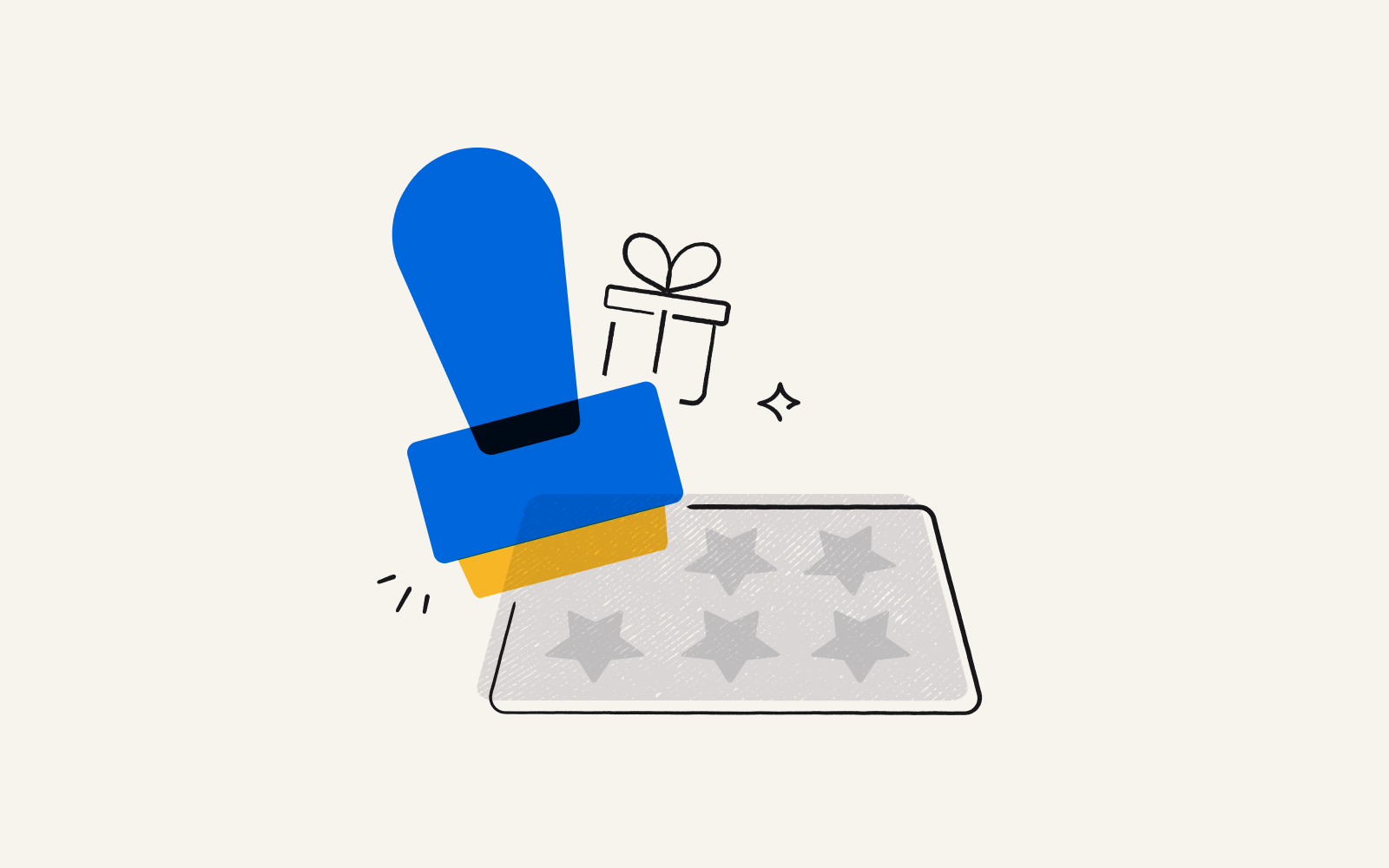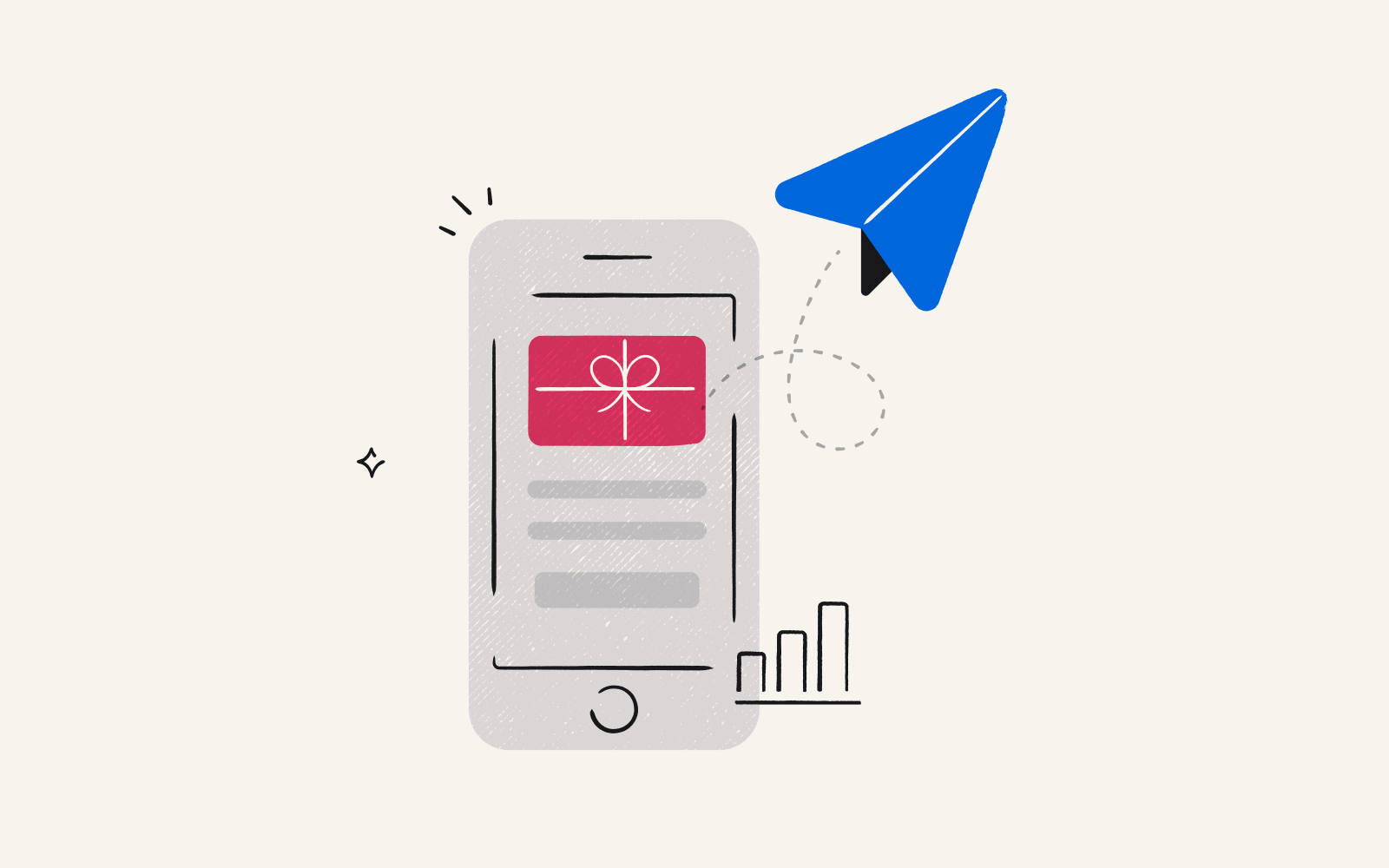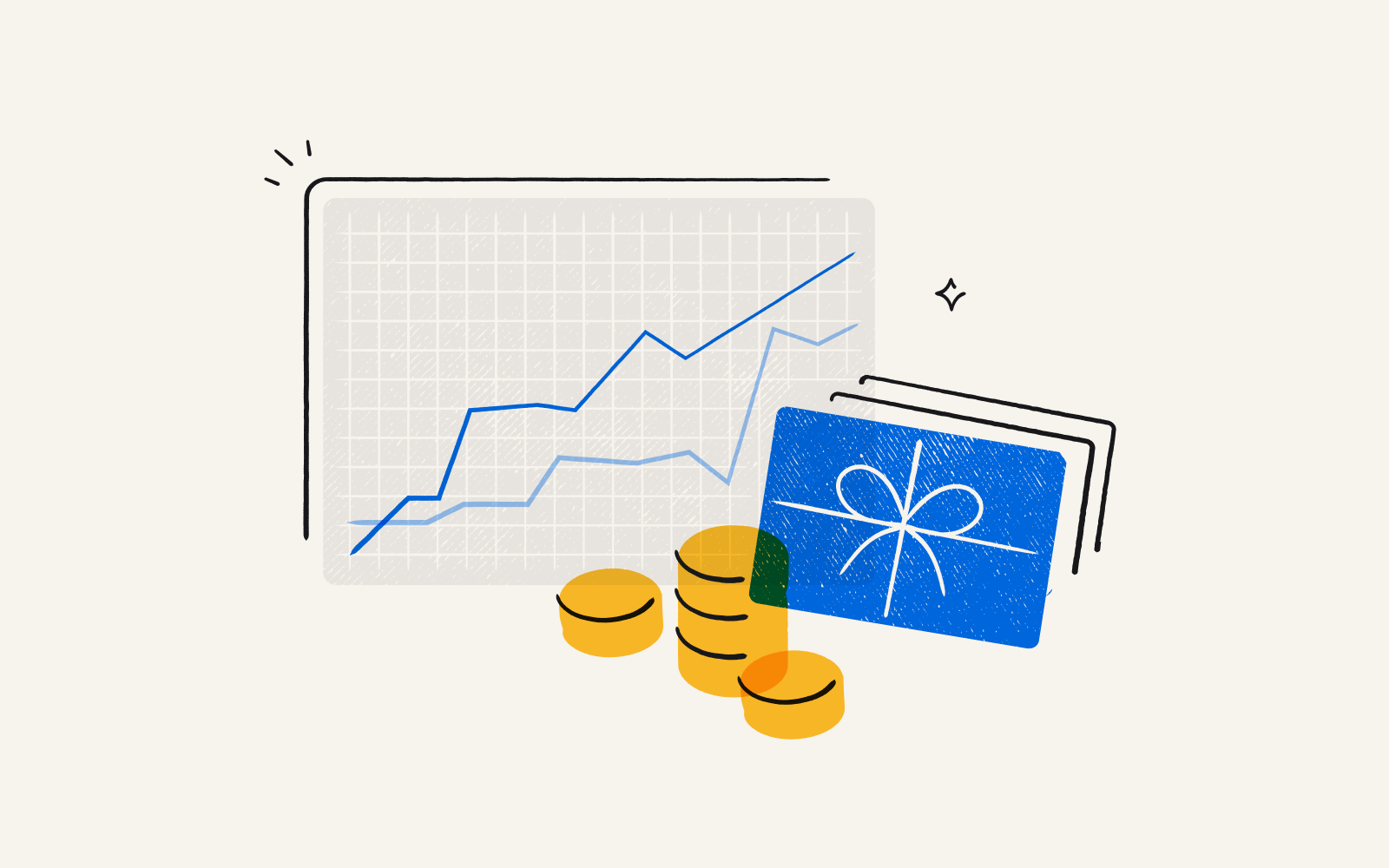10 examples of successful loyalty programs
By Amy Rigby|6 min read|Updated Jan 18, 2024

B2C companies without loyalty programs miss out on between 30-60% more sales. Two clear examples: loyalty rewards programs bring in more than half of Starbucks’ revenue and make up most of Sephora’s U.S. sales.
There are many different ways to structure your loyalty program. Below, we’ll go over 10 successful loyalty rewards programs (including from Starbucks and Sephora) and outline what makes them exceptional.
What is a loyalty rewards program?
A loyalty rewards program offers benefits such as discounts or gifts to incentivize repeat purchases. There are four popular types:
Points-based: Earn points for purchases and redeem those points for rewards.
Tiered: Unlock higher levels of rewards as spending increases.
Cashback: With each purchase, earn money to spend toward future purchases.
Membership: Become a member to access exclusive benefits. Usually, there is a fee.
Are loyalty rewards programs actually effective?
A 2020 McKinsey survey found that customers are 30% more likely to spend more money on the brand after joining free loyalty programs. That statistic jumps to 60% for paid loyalty programs.
On top of that, Accenture Interactive found that loyalty program customers generate 12-18% more revenue for retailers, compared to non-members.
10 examples of successful loyalty rewards programs
There are plenty of unique ways to design and incentivize your loyalty rewards program. Here's how some of the top B2C companies do it.
Starbucks
Cost: Free
Type of program: Points-based (called “Stars”)
How to earn rewards: 1 Star per $1 spent. 2 Stars per $1 spent on preloaded funds. Rewards start at 25 Stars.
Starbucks Rewards is, in many ways, the quintessential example of a successful loyalty rewards program. Its 30.8 million members generated 57% of the company’s revenue in the second quarter of 2023. Customers earn Stars for every purchase, which they can redeem for rewards like an iced coffee or a signature Starbucks cup.
Starbucks also gives members double the points if they preload their loyalty cards with funds. It’s a clever tactic that secures the company a huge cash advance. As of Q4 of 2023, Starbucks had $1.7 billion in unspent gift cards and preloaded loyalty cards.
CVS
Cost: Free and paid ($5/month or $48/year)
Type of program: Cashback and membership
How to earn rewards: Members earn 2% back in ExtraBucks Rewards (to apply toward future purchases).
The free CVS ExtraCare membership gives customers access to sales prices and rewards for purchases, prescriptions, and vaccinations. With more than 74 million members, CVS ExtraCare is one of the most popular loyalty programs in North America.
CVS employs the freemium model: the basic offering is free, while the paid ExtraCare Plus membership grants additional benefits, including free same-day delivery, free shipping, 20% off CVS Health brand products, and a $10 monthly bonus reward.
The freemium model is a bit controversial overall, but it makes perfect sense within the context of a loyalty program: free, basic benefits drive repeat purchases and brand loyalty, while the added perks of the paid membership create a revenue stream in itself.
Uber
Cost: $9.99/month or $99.99/year
Type of program: Paid membership
How to earn rewards: Uber One subscribers get free delivery on Uber Eats, up to 10% off deliveries and pickup orders, discounted pricing for trips, and free ride cancellation.
Uber is a great example of how pivoting from a free loyalty program to a paid one can pay off. In 2022, the ridesharing app sunsetted its free points-based loyalty program to focus on its premium membership, Uber One.
In the second quarter of 2023, 27% of gross bookings came from Uber One members.
American Airlines
Cost: Free
Type of program: Tiered, points-based. Gold, Platinum, Platinum Pro, Executive Platinum.
How to earn rewards:
Flying on American Airlines or its partners
Making purchases with the AAdvantage branded credit card
Shopping with American Airlines' partners
AAdvantage is the loyalty program of American Airlines. Members collect miles or Loyalty Points that can add up to free award travel. With AAdvantage, fliers also get exclusive promotions and board earlier than non-members.
The possibility of earning enough miles for a free trip or to earn status is so enticing, people will opt to book with American Airlines vs. another airline, sometimes even paying more or taking a less convenient route.
This model is so effective for airlines largely because the cost of their service is high. It’s easy to just go to Starbucks even though you have almost enough stamps on your local coffee shop card for a free latte. Ultimately, you’re only missing out on a savings of about $4. But it’s harder for people to accept that they may miss out on miles or points, given it could save them hundreds, or give them the chance of upgrades for a whole year.
Hilton
Cost: Free
Type of program: Tiered, points-based. Member, Silver, Gold, Diamond.
How to earn rewards: Starts at 10 base points per $1 spent. Members earn points on hotel stays, Lyft rides, Hilton branded credit cards, and dining. They can also purchase points.
Guests who join Hilton Honors get the guaranteed lowest prices on rooms, free wifi, and can use points to book free hotel stays. In addition to offering basic perks, the program sways people to choose Hilton over others via a tiered reward system.
Tiered reward systems offer members different benefits based on how much they’ve spent at your place of business. With Hilton Honors, there are 4 tiers: member (0-10 nights), silver (10+ nights), gold (40+ nights), and diamond (a whopping 60+ nights).
The perks get better and better the more nights you’ve booked with Hilton: Diamond members get things like executive lounge access, premium wifi, elite status gifting, and room upgrades.
Costco
Cost: $60 (Gold Star or Business) or $120 (Executive)/year.
Type of program: Paid membership
How to earn rewards: 2% back for Executive members
Did you know that about 80% of Costco’s gross margin comes from membership fees? That means it essentially operates its retail, from rotisserie chickens to tire installation, on a break-even basis, to encourage membership.
And it works: 9 in 10 people renew every year, and their membership is well past 120 million worldwide. They further engage their most avid customers with a store-credit program on the more expensive Executive membership: a flat 2% bonus, paid out annually.
Amazon
Cost: $14.99/month or $139/year. Free 30-day trial.
Type of program: Paid membership
With 200 million members, Amazon Prime is a powerhouse paid loyalty program. Prime members get free delivery, exclusive deals, and access to popular movies and TV shows — plus the revenue-boosting convenience of not having to think twice about where to buy just about anything they need. In the third quarter of 2023, Amazon beat estimates and brought in $10.17 billion in subscription services sales, including Prime, not to mention untold extra sales.
Sephora
Cost: Free
Type of program: Tiered, points-based
Insider: Free
VIB: Spend $350/year
Rouge: Spend $1,000/year
How to earn rewards: 1 point per $1 spent
Launched in 2007, Sephora’s Beauty Insider now boasts 31 million members. Beauty Insiders can redeem points for samples in the Rewards Bazaar, Sephora's branded online rewards store. The famous feature of this loyalty program is the free birthday gift, which can be anything from 250 bonus points to a makeup set.
Sephora’s loyalty program is so successful that loyalty members drive the majority of the company’s sales.
What’s unique about Sephora’s program is that it’s updated on a regular basis. Rather than wholesale, dramatic changes (see: Dunkin’s misstep below), the makeup retailer consistently adds and changes the perks available across its three tiers (Rouge, VIB, and Insider) to attract new members and delight existing ones.
Nike
Cost: Free
Type of program: Membership
How to earn rewards: Nike’s loyalty rewards program does not give customers points. Instead, members sign up for free to gain access to exclusive benefits.
Nike members get free shipping, 60-day wear tests, and receiptless returns—all through the Nike mobile app. The 300 million members make repeat purchases between both digital and physical retail for the iconic shoe brand. According to Nike CEO John Donahoe, the loyalty program creates "meaningful direct lifelong relationships with consumers" and was the top reason its digital business grew 34% in Q2 of 2022.
Dunkin’ Donuts
Cost: Free
Type of program: Tiered, points-based. Top customers reach Boosted Status.
How to earn rewards: 10 points for every $1 spent. Rewards start at 150 points.
In 2022, Dunkin’ replaced DD Perks with a revamped loyalty program called Dunkin’ Rewards. These changes were marketed as a response to member feedback: the donut chain made it easier to collect points and redeem them for rewards beyond just drinks. Customers can now use points to score free treats, from donut holes to everything bagels.
But Dunkin Rewards serves as a cautionary tale: many (including the Boston University student body) are not pleased with the changes ushered in by this rewards rebrand. Because, behind its glossy exterior, there are cost-cutting measures hidden in the fine print. For example, members now need to spend $50 instead of $40 before earning a free coffee.
Another matter provoking the ire of Dunkin loyalists is that, prior to the change, a free drink used to mean any beverage of any size. Now, members need to earn more points for a latte, cold brew, or cappuccino vs. a drip coffee.
The moral of this story: loyalty programs build your brand. Changing your loyalty program such that it’s less rewarding and hoping no one notices will likely not work. It may cut costs short term, but it’ll hurt brand perception in the long run.
Loyalty rewards programs pay off–when done right
Whether you’re starting or scaling your loyalty program, fine-tuning your incentives is key. Use these 10 successful examples as inspiration. Many share the following traits:
They make it free to join at least the basic membership.
They have a mobile app for convenience.
They offer some sort of “elite” status only top customers can achieve.
Their most beloved rewards are monetary, whether that’s cashback or discounts.
If you’re sending monetary rewards, Tremendous is the simplest way for businesses to personalize incentives and for customers to cash out. Request a demo to see why we’re trusted by organizations like Notion, Amazon, and
Published January 18, 2024
Updated January 18, 2024


